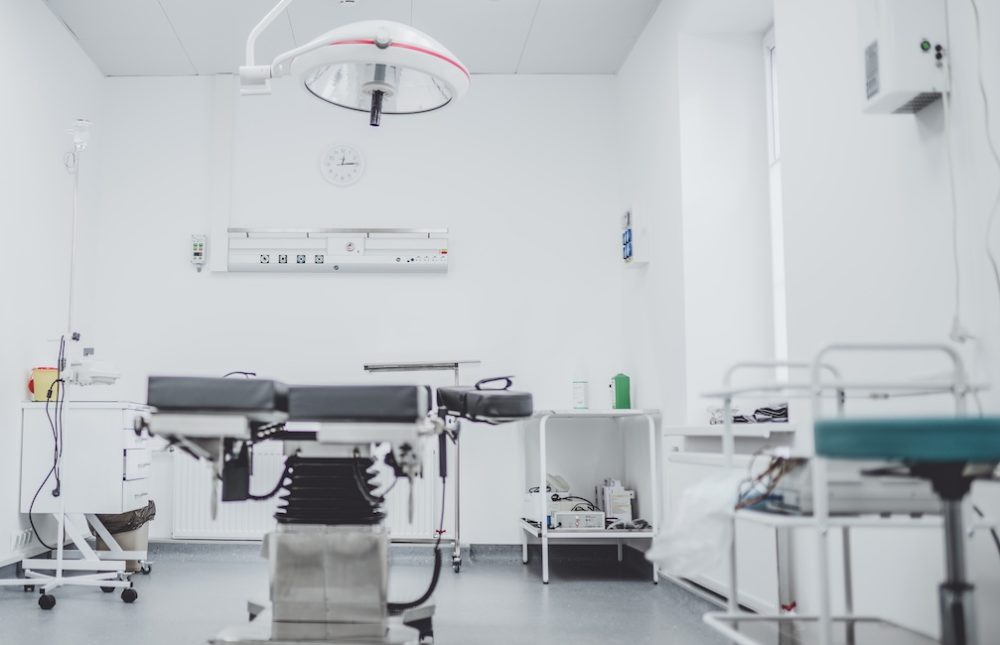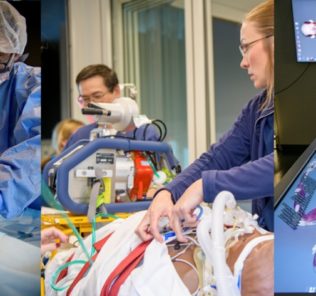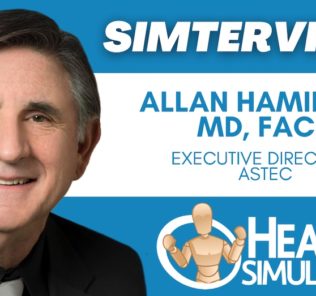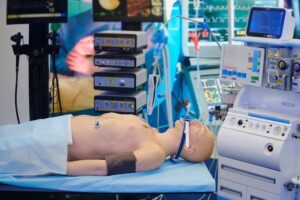Walk Through Healthcare Simulation Centers with These Virtual Tours
Healthcare Simulation centers are being developed across the globe, with many different layouts and designs. To provide a glimpse into these clinical education spaces, a number of healthcare simulation centers have had virtual tours created. Exploring how clinical simulation centers are laid out can provide a source of inspiration while helping to identify center uses that are optimal for medical education and patient safety. This article provides HealthySimulation.com readers with a look inside several prominent simulation centers, sharing background on these spaces and elements that make them unique.
Augusta University Interdisciplinary Simulation Center: The Interdisciplinary Simulation Center is the primary healthcare simulation resource for the healthcare training programs of Augusta University. The Center serves many different disciplines including nursing, medicine, allied health, and dentistry. The Center also offers the full spectrum of clinical simulation services including high fidelity simulation, standardized patients, skills labs, and procedural training. Course and faculty development services are available as well.
Center for Advanced Medical Learning & Simulation: The Center for Advanced Medical Learning & Simulation (CAMLS) is one the largest training facilities for healthcare professionals. Our 90,000 square feet facility is a leader in state-of-the-art medical simulations. CAMLS has a combination of surgical skills labs, operating suites, a virtual hospital and a simulation center. In addition to our lab space, CAMLS also offers 25,000 square feet of meeting and conference space. Click here to view the CAMLS Virtual Tour.
Sponsored Content:
Duquesne University School of Nursing’s Learning and Simulation Center: Learners gain clinical experience in the School of Nursing’s Learning and Simulation Center—a space dedicated to creating a deeper style of learning. The Center offers an array of technology that increases realism, improves the quality of the evaluation, and enhances clinical learning. Learners also have many opportunities to gain clinical knowledge and decision-making abilities, as well as strengthen your teamwork, communication, and leadership skills. The Center creates meaningful experiences through which students can grow into competent and confident professionals. Within the 7,000 square-foot space, they will find a variety of different learning rooms, including:
- High-fidelity simulation rooms.
- Primary care offices/standardized patient rooms.
- An augmented reality room.
- A fundamentals skills lab.
- A pediatric assessment room.
Arizona Simulation Technology Education Center: The Arizona Simulation and Technology Education Center (ASTEC) is a state-of-the-art facility that accomplishes many important objectives to provide the best inter-professional health education possible. Among these objectives are improving human health, fostering collaboration among different disciplines, launching valuable public-private partnerships, attracting and retaining the best health science students, closing the gap between new technology and modern medical education, and moving healthcare forward.
Penn State Hershey Simulation Center: The Penn State Hershey Clinical Simulation Center includes three departments: the Simulation Center, the Resuscitation Sciences Training Center (RSTC), and the Standardized Patient Program. Each of these departments utilizes clinical simulation as a teaching methodology for many types of learners. These departments provide learning opportunities for practicing physicians, residents physicians, nurses, respiratory therapists, paramedics, pharmacists, and other health professions, as well as learners in medicine, nursing, and physician assistants schools. Jointly operated and funded by the Milton S. Hershey Medical Center and the Penn State University College of Medicine, The Clinical Simulation Center has a long history of success in simulation-based education and research.
Pacific Lutheran University Nursing Clinical Learning and Simulation Center: Completed in September of 2020, this state-of-the-art Center upgrades and expands the practice space available to PLU nurses. In this space, they develop the skills required to become nursing leaders in our communities. The PLU School of Nursing Clinical Learning and Simulation Center is located in a renovated and repurposed PLU building, the former Garfield Book Company.
Sponsored Content:
University of Wisconsin-Madison School of Medicine and Public Health Clinical Simulation Program: The UW Health Clinical Simulation Program provides robust and realistic learning opportunities to prepare health care professionals for actual patient care situations. The program offers educational opportunities for students, faculty, and staff from UW Health, the UW School of Medicine and Public Health, departments across UW-Madison, and the community. The UW Health Clinical Simulation Program is located in University Hospital, in the H module on the first floor. Use the following guides to help find your way to our facility.
University of Texas Medical Branch at Galveston Health Education Center: An Interprofessional Health Education Simulation Center, the University of Texas Medical Branch at Galveston Health Education Center (HEC) has served over 2,500 learners in its first 90 days of operations. As part of the dedicated service to the educational community of the University of Texas Medical Branch, the Center strives to contribute to the education, training, and development of the thousands yet to come from campus and community partners. The HEC Mission Statement is to lead innovative interprofessional health and science education through cutting-edge simulation to optimize collaborative learning and improve health outcomes.
MBR University Khalaf Ahmad Al Habtoor Medical Simulation Center: Khalaf Ahmad Al Habtoor Medical Simulation Center (KHMSC) is a fully accredited medical education and training facility, committed to improving patient safety through the delivery of healthcare simulation-based courses by creating a pathway from pre-admission to discharge. Spread over 34,000 square feet, the Simulation Center is the first-of-a-kind in the UAE, designed to help educate and improve skills in patient care by showcasing realistic hospital environments and a clinical skills lab.
Learn More About Simulation Centers
Lance Baily, BA, EMT-B, is the Founder & CEO of HealthySimulation.com, which he started while serving as the Director of the Nevada System of Higher Education’s Clinical Simulation Center of Las Vegas back in 2010. Lance is also the Founder and acting Advisor to the Board of SimGHOSTS.org, the world’s only non-profit organization dedicated to supporting professionals operating healthcare simulation technologies. His co-edited Book: “Comprehensive Healthcare Simulation: Operations, Technology, and Innovative Practice” is cited as a key source for professional certification in the industry. Lance’s background also includes serving as a Simulation Technology Specialist for the LA Community College District, EMS fire fighting, Hollywood movie production, rescue diving, and global travel. He and his wife Abigail Baily, PhD live in Las Vegas, Nevada with their two amazing daughters.
Sponsored Content:

















